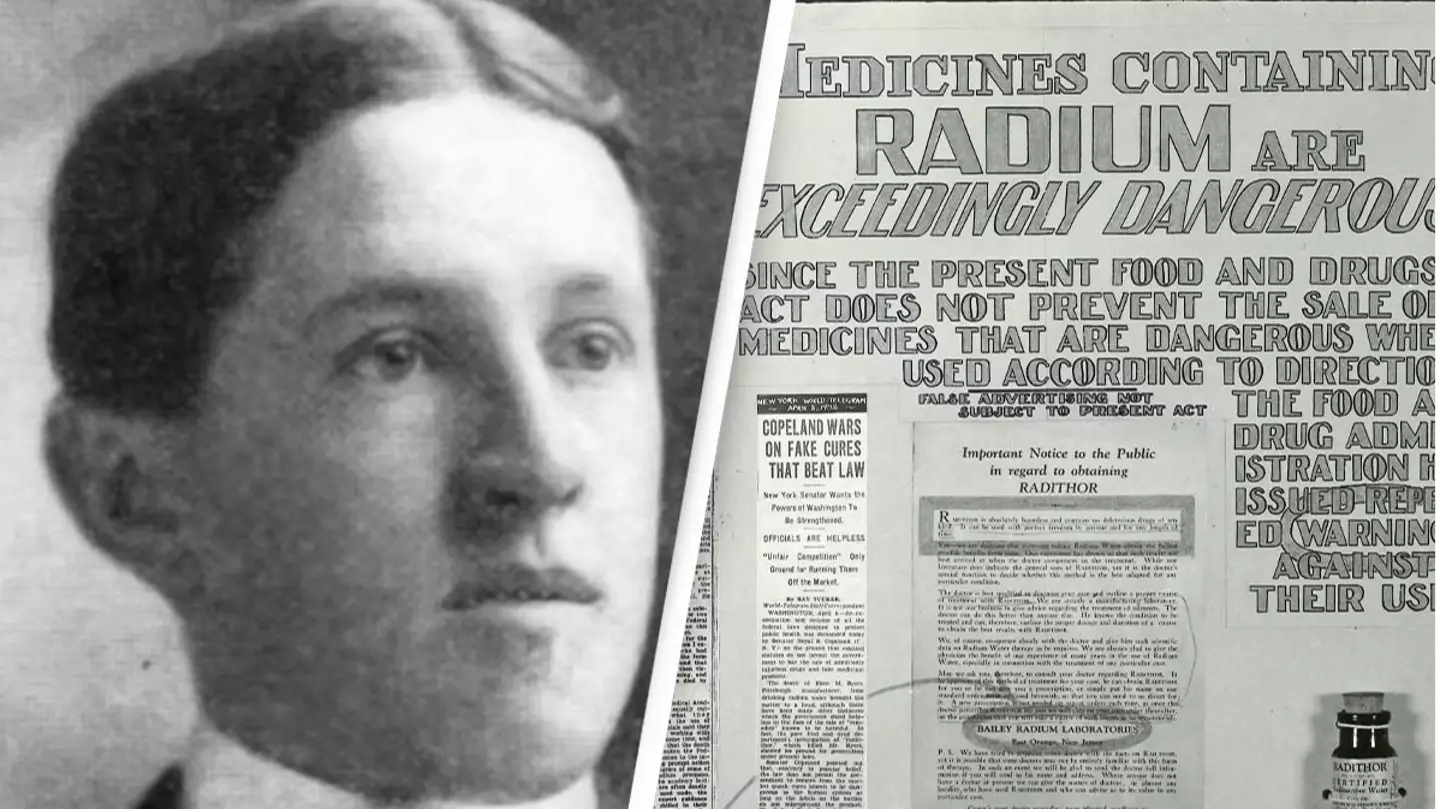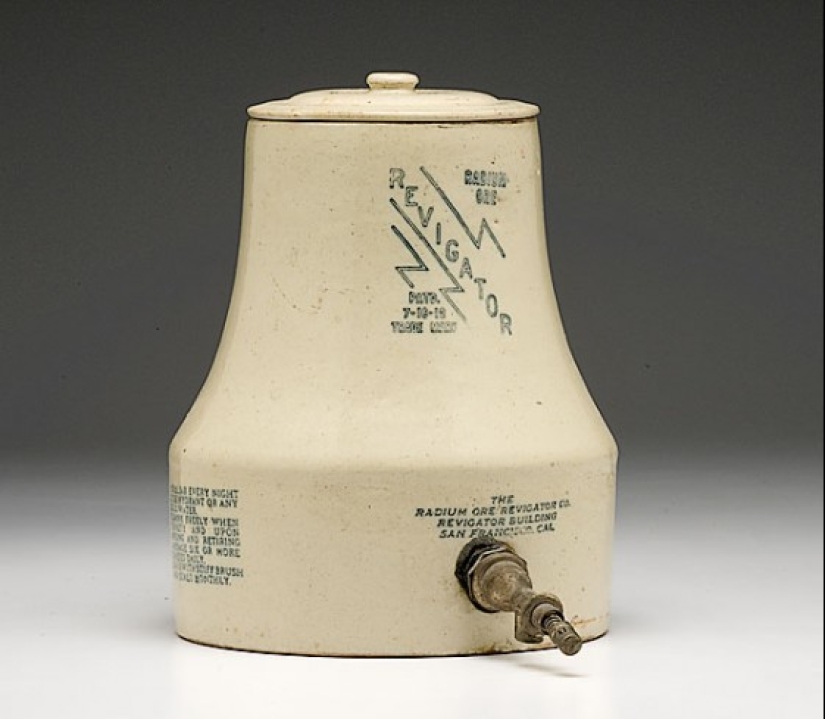Would you wager your health, your very life, on the promise of a miracle cure? Eben Byers did, and his tragic story serves as a chilling reminder of the perils lurking within unchecked scientific enthusiasm and the seductive allure of readily available remedies. His tale is not just a historical footnote; it's a stark warning echoing across the decades, urging us to question, to investigate, and to demand rigorous scrutiny before embracing the next supposed panacea.
Throughout history, few narratives are as profoundly disturbing and cautionary as that of Eben McBurney Byers. Born into a world of unimaginable affluence on September 12, 1880, in Pittsburgh, Pennsylvania, Byers was the progeny of a distinguished industrialist dynasty. He wasnt merely wealthy; he was a titan of the steel industry, a celebrated athlete, and a charismatic socialite. Life, it seemed, had bestowed upon him every conceivable advantage. Yet, his pursuit of enhanced vitality and vigor led him down a path paved with deception, ultimately culminating in a demise so gruesome it would shock the nation and ignite a revolution in medical safety standards.
| Category | Information |
|---|---|
| Full Name | Eben McBurney Byers |
| Date of Birth | September 12, 1880 |
| Place of Birth | Pittsburgh, Pennsylvania, USA |
| Date of Death | March 31, 1932 |
| Cause of Death | Radium Poisoning |
| Father | Alexander McBurney Byers |
| Education | Yale University |
| Occupation | Industrialist, Socialite, Athlete (Golf, Equestrian Sports) |
| Company | Byers Steel Company (family business) |
| Known For | His tragic death due to Radium Poisoning after consuming Radithor. |
| Legacy | His case brought awareness to the dangers of unregulated radioactive substances and led to stricter regulations in the pharmaceutical industry. |
| Reference Link | Find a Grave - Eben McBurney Byers |
Eben Byers' early life was one of privilege and promise. He was born Ebenezer McBurney Byers, though he later went by Eben, in Pittsburgh, Pennsylvania, on April 12, 1880. His father, Alexander McBurney Byers, was a prominent figure in the steel industry, ensuring his son a life of comfort and opportunity. Byers was not just born into wealth; he embraced it. He excelled academically, graduating from the prestigious Yale University, and developed a passion for sports, particularly equestrian pursuits and golf. He wasnt merely a dilettante; he was a skilled athlete who competed professionally, demonstrating a drive and ambition that extended beyond the boardroom.
- Hdhub4u In 2025 Your Guide To Movies Downloads More
- Decoding Sone 436 The Viral Video Phenomenon Explained
However, his carefully constructed world began to unravel when, seeking relief from a minor injury, he encountered Radithor, a patent medicine containing radium. This concoction, touted as a revitalizing elixir, promised to restore youthful vigor and cure a myriad of ailments. Blinded by the promises and perhaps fueled by the naivete of an era where scientific understanding lagged behind marketing hype, Byers began consuming Radithor with alarming regularity. He genuinely believed he was investing in his well-being, enhancing his performance, and extending his prime.
Initially, he may have experienced a placebo effect, a fleeting sense of invigoration that reinforced his belief in the product's efficacy. But the insidious nature of radium was at work, silently accumulating within his bones, poisoning him from the inside out. The consequences were devastating. Over time, Byers' health deteriorated dramatically. The vibrant sportsman, the astute businessman, transformed into a shadow of his former self. His jaw began to disintegrate, his teeth fell out, and excruciating pain became his constant companion. The very substance he believed was rejuvenating him was, in reality, systematically dismantling his body.
As his condition worsened, Byers became a national headline. People were simultaneously fascinated and horrified by his plight. His story served as a cautionary tale, exposing the dark side of unregulated medicine and the dangers of blindly trusting unsubstantiated claims. The media chronicled his decline, turning him into a symbol of the perils of unchecked scientific hubris. His once-private suffering became a very public spectacle, a stark reminder of the potential consequences of placing faith in unproven remedies.
- Alyx Star Age Wiki Height Bio The Ultimate Guide
- Vegamovies Hoichoi Your Guide To Streaming Movies Series
The most devastating consequence of radium's adverse effects on Eben was the gradual loss of his entire lower jaw. This wasn't just a cosmetic issue; it was a profound impairment that affected his ability to eat, speak, and ultimately, to live with dignity. The pain was described as excruciating, a constant reminder of the poison coursing through his veins. He became a prisoner in his own body, a stark contrast to the vibrant, active man he once was.
In 1930, as his health continued to decline precipitously, attorney Robert Hiner Winn visited Byers on behalf of Time magazine. Winn's description of the once-vigorous industrialist painted a grim picture: "Young in years and mentally alert, he could hardly speak." This poignant observation underscored the cruel irony of Byers' situation. His mind remained sharp, aware of the tragedy unfolding around him, but his body had betrayed him, ravaged by the very substance he believed would prolong his life.
Eben M. Byers, the wealthy Pittsburgh steel manufacturer and sportsman, died on Wednesday at Doctors' Hospital from causes attributed to radium poisoning resulting from drinking Radithor. His death stirred federal and local agencies, as well as medical authorities in various parts of the country, to action. The case was a watershed moment, prompting investigations and ultimately leading to stricter regulations on radioactive substances in consumer products. The opulent mausoleum erected by the Byers family became his final resting place, a silent testament to a life tragically cut short.
The "radium girls," who suffered horrific consequences from painting watch dials with radium-laced paint, faced similar fates. These women, often young and working-class, were exposed to high levels of radiation, resulting in bone cancer, anemia, and other debilitating conditions. Their stories, though initially suppressed, eventually came to light, further fueling the public outcry against unregulated radioactive substances. The sores and gaping wounds that plagued these women mirrored the destruction within Eben Byers' own body, highlighting the widespread dangers of radium exposure.
The Wall Street Journal (WSJ) covered the 1932 death of Eben Byers, a pro golfer and industrialist, who suffered progressive radium poisoning. This coverage, along with other reports, brought the issue to the forefront of public consciousness. While the radium girls' cases should have been enough to spark outrage, it was the death of a wealthy and prominent man that truly captured the attention of the nation. This unfortunate reality underscores the societal biases that often influence public perception and regulatory action.
A bottle of Radithor, the very elixir that led to Byers' demise, now sits at the National Museum of Nuclear Science & History in New Mexico, United States. It serves as a chilling artifact, a tangible reminder of the dangers of unregulated radioactive substances and the seductive allure of miracle cures. It stands as a silent warning, urging us to learn from the past and to approach scientific advancements with caution and critical thinking.
In 1965, almost 35 years after Eben Byers passed away, researchers from the University of Pittsburgh exhumed his body to study the effects of radium on human remains. The findings were startling. Despite the passage of decades, Byers' remains were still highly radioactive and dangerous. This discovery underscored the long-lasting and devastating effects of radium exposure, highlighting the need for stringent safety measures and ongoing monitoring of individuals who may have been exposed.
The tragic story of Eben Byers' bones tells a cautionary tale of the dangers of unregulated radioactive substances in the early 20th century. It's a story of hubris, of unchecked scientific enthusiasm, and of the devastating consequences of prioritizing profit over public safety. It's a story that continues to resonate today, reminding us to question, to investigate, and to demand accountability from those who promote miracle cures and unsubstantiated health claims.
Eben Byers could have lived a privileged, enviable life. The son of a rich industrialist, he attended the best schools in the United States and had his future handed to him on a silver platter. Yet, his life took a tragic turn when he unknowingly consumed a product that promised health benefits but delivered catastrophic consequences. His story serves as a reminder that even the most fortunate among us are vulnerable to the dangers of misinformation and the allure of quick fixes.
Eben Byers, a prominent socialite, consumed Radithor, a patent medicine containing radium, under the belief that it would enhance his vitality. His subsequent physical deterioration and eventual death stand as a stark warning against the dangers of unregulated health remedies. His legacy extends beyond his personal tragedy; it serves as a catalyst for change, prompting stricter regulations and greater public awareness of the potential risks associated with untested and unproven medical treatments.
The unfortunate results of Ebens Radithor regimen serve as a powerful example of the devastating consequences of unchecked medical claims. His story is a testament to the importance of rigorous scientific testing and the need for independent verification of health claims. It underscores the responsibility of manufacturers and regulators to prioritize public safety over profit, and to ensure that consumers are protected from potentially harmful products.
Eben Byers was one of the most public cases of radium poisoning, and his story captivated the nation. People were fascinated by his rapid decline and the gruesome details of his condition. His case became a rallying cry for those advocating for stricter regulations on radioactive substances and greater consumer protection. His legacy continues to inspire efforts to safeguard public health and to prevent similar tragedies from occurring in the future.
Federal and local agencies, as well as medical authorities in various parts of the country, were spurred to action as a result of the death of Eben M. Byers. His case highlighted the urgent need for government oversight and regulation of the pharmaceutical industry. It led to investigations into the manufacturers of Radithor and other similar products, and ultimately resulted in stricter laws and regulations governing the sale and distribution of radioactive substances.
These sores and gaping wounds, similar to those suffered by the radium girls, were the horrifying reality of radium poisoning. The disintegration of bone tissue, the excruciating pain, and the disfigurement were all testaments to the insidious nature of this radioactive element. The tale of Eben Byers serves as a stark reminder of the human cost of scientific ignorance and the importance of prioritizing human health and safety above all else.
And this was beginning to happen all over the place where these radium girls were employed, highlighting the widespread nature of the problem. The radium industry, driven by profit and a lack of understanding of the dangers of radiation, exposed countless individuals to significant health risks. The stories of the radium girls and Eben Byers are intertwined, both serving as powerful examples of the devastating consequences of unchecked industrial practices and the need for greater corporate responsibility.
- Is Jackermans Mothers Warmth Chapter 3 Release Soon Find Out
- Hikaru Nagi Sone 436 The Latest Updates Mustknow Facts


